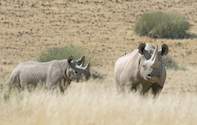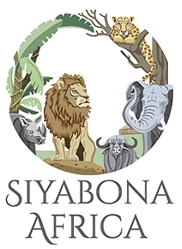
The large mammals of Damaraland have long lived in conflict with stock farmers in surrounding community lands, where the struggle for resources is laid naked. This makes conservancies like Palmwag vital to the survival of both. But the "natural" order of things here, as elsewhere in Africa - has been and continues to be subverted by an uneven, external force.
For centuries Asian people have believed rhino horn is an aphrodisiac and analgesic and it has been used in traditional medicine. The demand wiped out the Asian rhino populations and, from the early 1900s, African rhinos began to be targeted. The populations plummeted from an estimated several hundred thousand to maybe a few thousand today.
"Powdered rhinoceros horn is sold in Far East apothecaries' shops, particularly China," wrote Polish-German conservationist Bernard Grzimek in Among the Animals of Africa ( 1970).
"This is why rhinos have suffered persistently at the hands of poachers. Years ago, people were paying as much as ge3 per lb. of horn on the black market.; Its value is based on the same sort of superstition as that which enables Chinese apothecaries to sell the dragon's teeth and other weird things for medicinal purposes. Superstition has been responsible for exterminating many species."
Today rhino horn can fetch around $65,000 a kilogram on the black market and is worth more than gold or cocaine. It is in great demand as a status symbol amongst a growing middle class. The thirst for "medicinal" horn in China and Hong Kong, Vietnam, Thailand and Taiwan, far exceeds the thirst of the animals in Palmwag even in the direst of droughts.
Rhino horn consists entirely of keratin, the same substance that makes nails and hair in every mammal. The people of southeast Asia who are driving the rhino killing might as well cut their own toenails and ingest that for all the good it will do them. Saving the rhino from extinction is the subject of vehement debate amongst conservationists, wildlife groups and indeed the public in general. Various solutions have been proposed and several have been implemented in the hope of halting the current slaughter. There appears, however, to be just far too many invested interests to do the good and right thing. At the last flip of the evolutionary coin, it is humans, perhaps, that will be the species least adapted to their environment,
On arriving at Desert Rhino Camp, Pat looked like the cat with her head in the cream. "This is my kind Of place", she declared, knowing we would like it as much as she. It is comfortable and generous in the things necessary for a happy safari, but with no excess, as befits its desert situation. The structures consist of timber and canvas, but to describe the units as tents is like calling an ostrich a large chicken.
Desert Rhino Camp is the showpiece of Wilderness Safaris when it comes to giving back to neighbouring communities that in many ways own the land. The camp staff are a very professional team and have a sense of fun not often encountered elsewhere. At the same time, they appear to take great pride in their role as partner custodians of the desert creatures. Desert Rhino Camp makes looking for rhinos oh so civilised. The evening menu and wine announcements are a theatrical delight.
Desert Rhino Camp is not an easy place to get to; the best places seldom are. It is an often-repeated homily that you cry twice when you visit Namibia. The first is when you arrive and the second when you have to leave. As you climb into the Land Rover headed for the airstrip and the amazing camp staff line up and sing a heartfelt farewell; you will be strong indeed if you are able to hold back a tear or two.
By David Bristow

 Desert Rhino Camp offers one of the most exciting Namibia safaris in rugged northern Damaraland. Partnership with Save the Rhino Trust - R...
Desert Rhino Camp offers one of the most exciting Namibia safaris in rugged northern Damaraland. Partnership with Save the Rhino Trust - R...